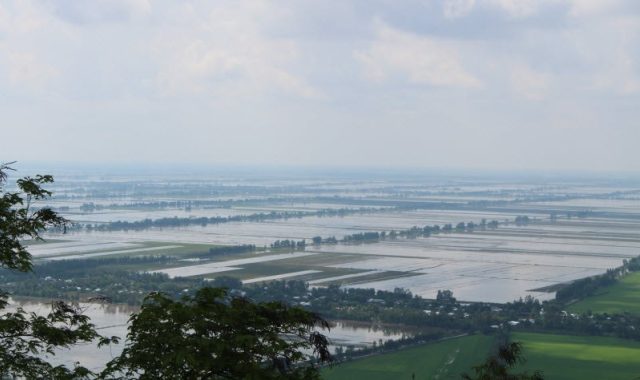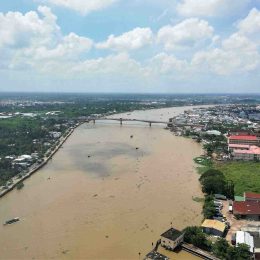50% of the Mekong Delta at risk of salinisation due to sand mining and dam building
Sediment starvation in the Mekong Delta can drive 50% of the area saline by 2050. This is shown in a study by the Rise and Fall Project of Utrecht University and Deltares, published in the Springer Nature journal Communications Earth and Environment. The researchers show that in the first half of the century, the anthropogenic forces, specifically eroding riverbeds due to sediment starvation, can have a 6-7 times larger impact on salt intrusion than climate change and sea level rise.
The study shows for the first time the combined effect of climate change and human impact on salt intrusion at the scale of a mega delta such as the Mekong Delta.
“As encroaching salt intrusion strains freshwater supply, land use change and migration can become inevitable. Massive socio-economic implications of land use transformation at such scales, may disproportionately affect the vulnerable communities in and beyond the delta,” explained main author Sepehr Eslami.
This means that the window of opportunity for limiting further salt intrusion is much shorter than previously considered. The Mekong Delta alone, the third largest delta in the world, is home to 18 million people. Vietnam is the world’s second-largest rice exporter, and the majority of that rice is produced in the Mekong Delta.

Integration of climatic and anthropogenic environmental stressors in numerical models
Using a combination of process-based numerical models that integrate both climatic and anthropogenic environmental stressors, the salt intrusion forecasts of the Mekong mega delta were produced. The projections provide crucial information for the development of adaptation policies in the Mekong Delta. The method is a source of inspiration for future systematic studies of environmental changes in other deltas.
Worldwide implications
The findings have significant implications for the Mekong and other deltas worldwide, specifically the large tropical and subtropical Asian deltas, such as Ganges Brahmaputra, Ayeyarwady, Pearl and the Chao Phraya. Eslami: “While climate change threatens the world’s largest deltas, human-made processes, largely reflected in sediment starvation and hydrological regime shifts, seem to outpace climate change in the first half of the 21st century.”
Sediment starvation in Mekong Delta
Upstream dams trap sediment that leads to bed, bank, and coastal erosion, and alter the hydrology cycle, disrupting the crucial retention functionality of the Lake Tonle Sap, in Cambodia. The significantly deeper channels make the delta itself much more vulnerable to changes such as drought, i.e., salinity can intrude much further inland, and sustain for longer periods.
Sand mining within and beyond the Mekong Delta (in Cambodia and Laos) further deepens the rivers. The large-scale extraction of groundwater causes subsidence in the low-lying delta. All inviting salt further inland. The researchers conceded that a reduction in groundwater extraction and sand mining could save up to 600 thousand hectares (three times the size of Mauritius) of land from saline water.




